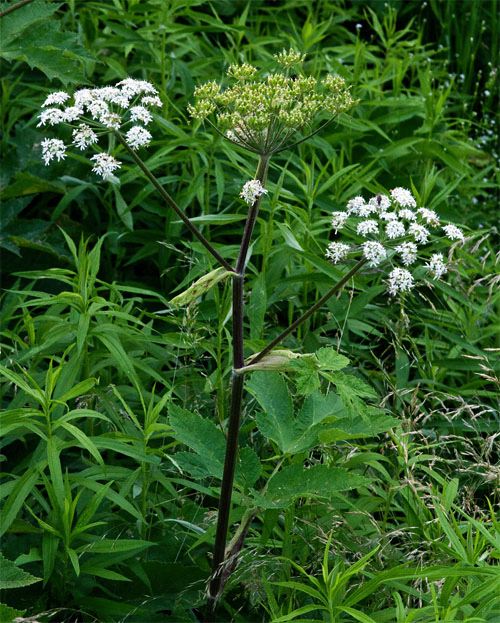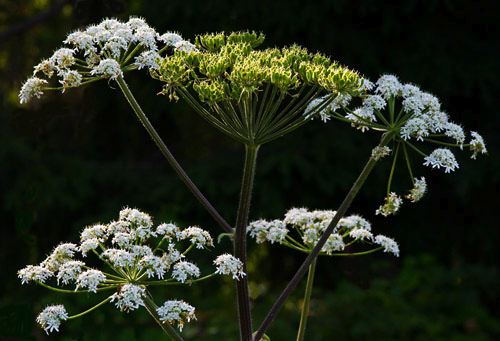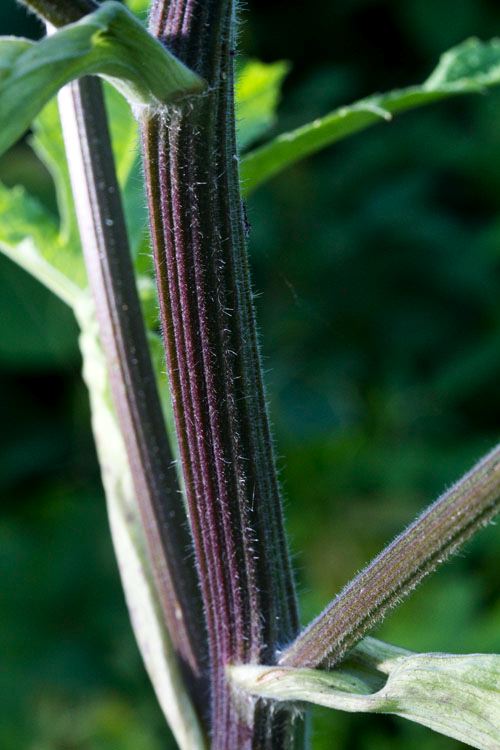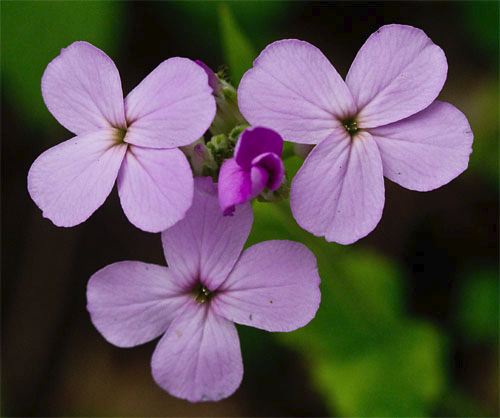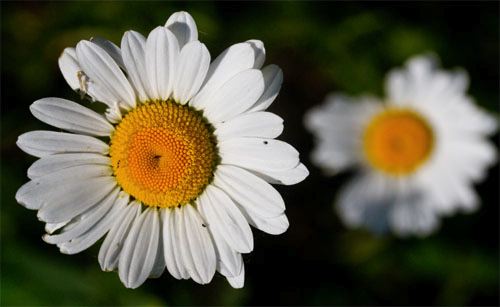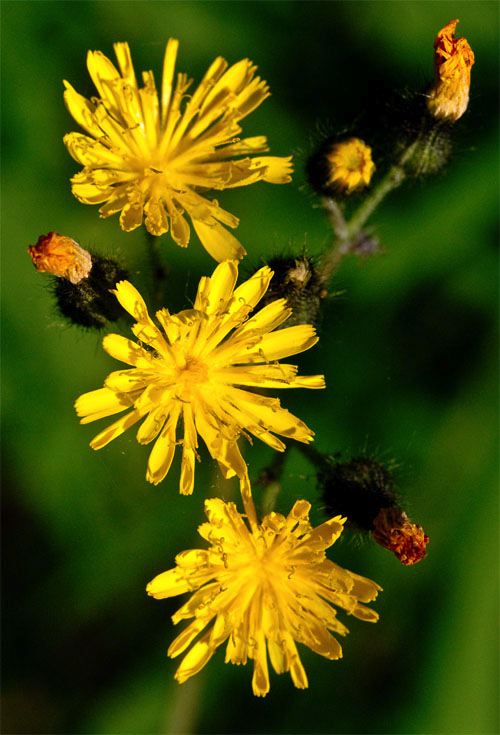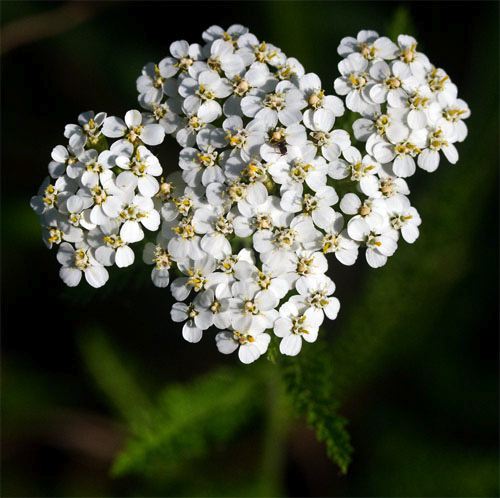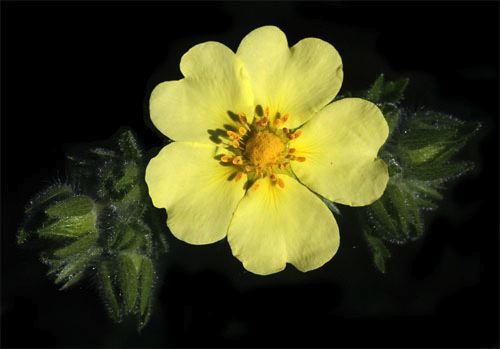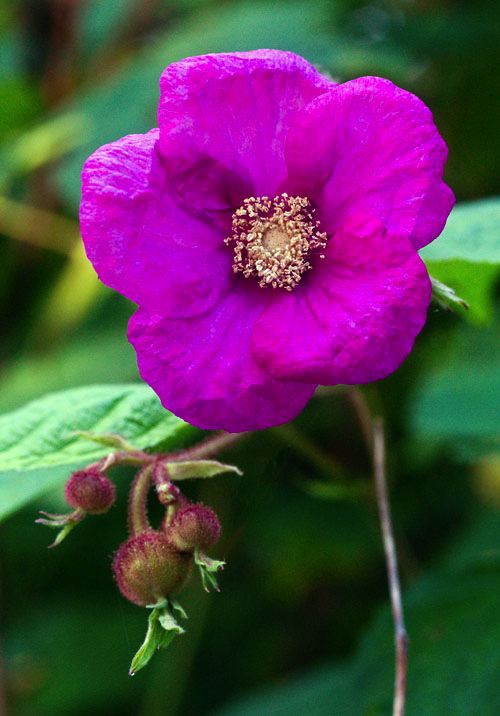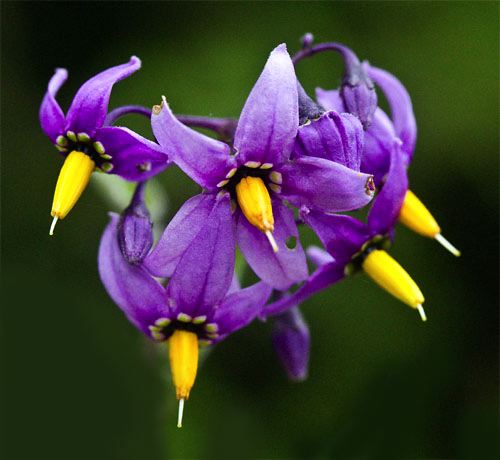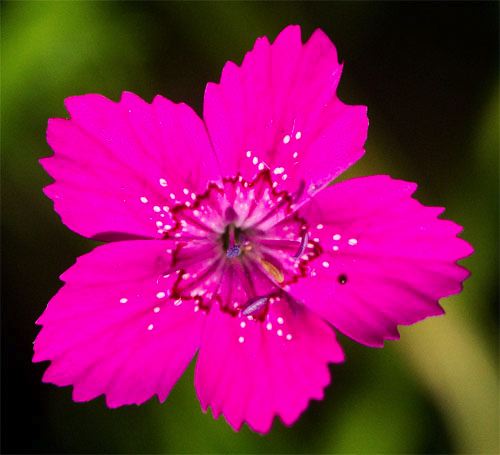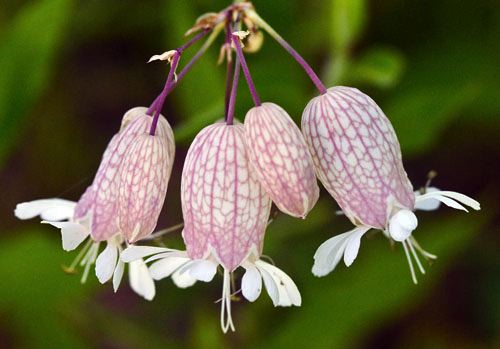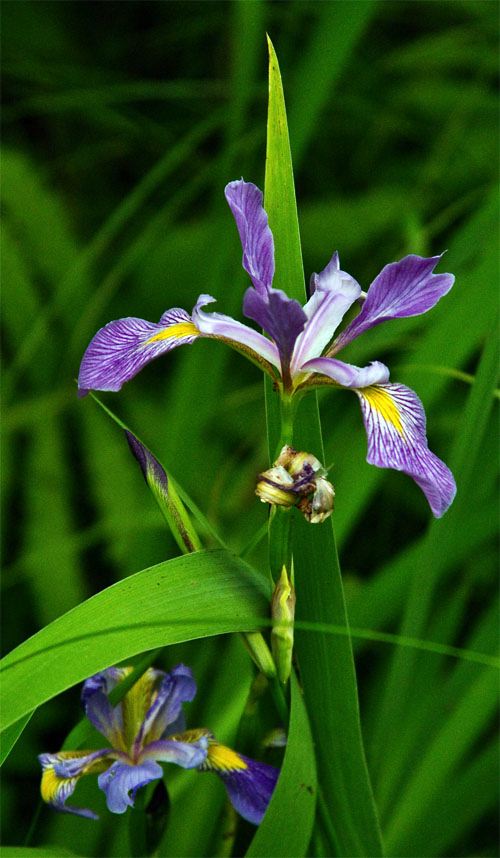|
|
|||
|
(Back to Preceding Week; on to Next Week) |
|
All text & photos © Hilton Pond Center ROADSIDE FLORA IN This week we were slated to lead a public bird banding workshop in Fayette County, West Virginia--about 265 miles up I-77 from Hilton Pond Center--so it seemed "only logical" being that far north we might as well drive a mere 685 miles to Morristown, New York. After all, lifelong friend Jim Shuman lived there with his wife Laurie AND the lovely couple would be celebrating their 14th wedding anniversary on 14 June. In that we videotaped their marriage ceremony at Gouveneur NY in 1996 and also helped them observe their tenth at Morristown a decade later, With wife Susan we headed out from West Virginia early on the afternoon of 11 June, stopping for the night at Lackawanna NY on the eastern shore of Lake Ontario. (The Hiltons were quite surprised to see thousands of acres of vineyards this far north--see photo above--and didn't learn until later that New York State is fourth in U.S. wine production, exceeded only by California, Washington, and Oregon.) Next morning we departed Lackawanna, passing a stretch of the Erie Canal before turning north on I-81. We were impressed how green this part of New York turned out to be, so when we got to Morristown--where the Shumans welcomed us with hugs and a South Carolina flag on their boathouse (above left)--we vowed to stroll roadsides around Morristown to see what kind of flora we might find and photograph.
All text & photos © Hilton Pond Center As a fellow educator-naturalist, Jim Shuman was eager to show us around and the first place he took us was a patch of "weeds" at the beginning of his driveway. There he pointed out a four-foot-tall umbelliferous plant that looked superficially like several other white-flowered species including Water Hemlock, Cow Parsnip, and Joe-Pye Weed.
All text & photos © Hilton Pond Center When we looked closer we suspected the plant was Common Hogweed, Heracleum sphondylium, an invasive plant from Eurasia that has become established in northeastern states and eastern Canada. We noted the purple stem, however, and ruled out Common Hogweed, thinking instead it might be the native wildflower Angelica, Angelica atropurpurea. When Jim Shuman cautioned strongly against touching the plant, we completely changed our thinking.
All text & photos © Hilton Pond Center In macroscopic view the purple stems were covered by tiny bristles, which meant it couldn't be Angelica. These bristles were also a sign the plant might indeed be dangerous to touch. Fortunately, Jim Shuman had learned the plant's identity and knew it could cause serious dermatitis in humans; it was Giant Hogweed, Heracleum mantegazzianum, another Asian invasive that is less widespread but far more pernicious than its congener, Common Hogweed. All parts of Giant Hogweed--including roots, stems, leaves, flowers, and seeds--contain furocoumarin. Upon contact this organic compound can enter the nuclei of skin cells, bond with the cells' DNA, and kill the cells outright--but only when stimulated by ultraviolet light. Blisters that result often form long-lasting purplish-black scars laden with melanin pigment. Although non-native Giant Hogweed is currently isolated in the northeastern U.S. it is a federally designated noxious weed and is on South Carolina's list of "rapid response" plants that need to be eradicated when first detected. Needless to say, Jim Shuman was eagerly awaiting arrival of a New York agriculture department crew that had promised to remove this unwelcome and potentially painful Giant Hogweed colony.
All text & photos © Hilton Pond Center We doubted any plants we found along the byways leading from the Shuman home would be as dangerous as Giant Hogweed, so on several days while we were in the St. Lawrence River Valley we felt comfortable getting quite close to roadside flowers--a few native but most from overseas and several of which we have yet to encounter in South Carolina's Piedmont Region. Among the most common roadside blooms around Morristown was a pale purple one called Dame's Rocket, Hesperis matronalis (above), an import from Europe. A four-petaled blossom correctly shows it's a member of the Mustard Family (Brassicaceae) and differentiates it from similar-looking native Phlox species that have five petals. Dame's Rocket is a prolific biennial that has become quite widespread in North America because it is often included in so-called "wildflower" seed mixes. Despite the attractiveness of its flowers, Dame's Rocket is so naturalized in many parts of the U.S. it is deemed invasive.
All text & photos © Hilton Pond Center Several roadside plants we encountered around Morristown bore composite blossoms, i.e., those with sterile ray flowers and fertile disk flowers. All these are in the Aster Family (Asteraceae, formerly Compositae) and can be a bear to identify to species. We're pretty confident the stands of little one-inch pinkish flowers on the roadside near Morristown were all Eastern Daisy Fleabane, Erigeron annuus (above)--a native plant with nearly universal distribution in temperate North America. (CAVEAT: There are 173 species of Erigeron in Canada, the U.S., and Mexico, and not all are easy to differentiate in the field.)
All text & photos © Hilton Pond Center Right beside the Erigeron cluster was another composite; in fact, it was the one for which fleabanes were named--the unmistakable Ox-eye Daisy, Chrysanthemum leucanthemum, AKA Leucanthemum vulgare (above). This plant has a even wider distribution than its smaller cousin, growing prolifically even as far north as Alaska and ALL the Canadian provinces except Nunavut! This is a pretty amazing accomplishment when we consider daisies are not native to the Western Hemisphere and were brought from Europe--probably less than three centuries ago. Today Ox-eye Daisies out compete native wildflowers so well many states consider the species invasive.
All text & photos © Hilton Pond Center Without question the most brightly colored composite we found while wandering the roadsides in Upstate New York was Orange Hawkweed or Devil's Paintbrush, Pilosella aurantiaca (formerly Hieracium aurantiacum), above. Another non-native plant, this species was intentionally brought from alpine European habitats to North America--and most of the rest of the world--as a garden ornamental. Once established it was hard to eliminate because it reproduces both sexually by seeds and vegetatively by runners and shallow rhizomes. Curiously, it is a protected plant in much of its natural range but is considered a noxious weed in several U.S. states . . . and in Tasmania.
All text & photos © Hilton Pond Center Although Orange Hawkweed and several of its close relatives are now in genus Pilosella, many other hawkweeds remain in genus Hieracium. Unfortunately, some hawkweeds are so similar they baffle even experienced wildflower enthusiasts, hence their nickname of "DYCs." That stands for "Damned Yellow Composites"--the botanical equivalent of "LBJs" (Little Brown Jobbers) and "CFWs" (Confusing Fall Warblers) that are the bane of birdwatchers everywhere. Lest you think we exaggerate, within genus Hieracium there are more than 1,000 species! Suffice it to say we will not attempt to specifically identify the yellow hawkweed in the photo above.
All text & photos © Hilton Pond Center One roadside plant far easier to identify is Common Yarrow, Achillea millefolium (above), known in Spanish as lumajillo ("little feather") because of its distinctive leaf shape. It, too, is a member of the Asteraceae, although one must look very closely at the flat-topped inflorescence--a 10x hand lens helps--to see its composite flowers. The species is unusual in that it holarctic, i.e., found across the Northern Hemisphere, and thus is native to North America AND Europe AND northern Asia. Common Yarrow is a drought-tolerant plant well-known by herbalists who take advantage of its astringent properties to cure hemorrhoids and staunch wounds.
All text & photos © Hilton Pond Center Yet another Eurasian import common this week along New York roadsides was a pale yellow five-petalled flower that resembled a simple rose; it was Sulfur Cinquefoil, Potentilla recta, which not surprisingly IS a member of the Rose Family (Rosaceae). Although the word "cinquefoil" is derived from French and Old English and means "five leaves," this particular species has foliage divided into six or seven and even nine leaflets. Its blossoms--which vary from white to gold--produce a dry, inedible fruit resembling that of the familiar Indian Strawberry, Potentilla indica (AKA Duchesnea indica).
All text & photos © Hilton Pond Center One of the largest roadside flowers we spotted around Morristown was another member of the Rose Family--a Purple-flowering Raspberry, Rubus odoratus (above), twining its way through a roadside thicket. As we reached into a tangle to make our photo of its three-inch purple blossom, we were very glad this rambling shrub wasn't armed with scratchy thorns like blackberry relatives that grow back home at Hilton Pond Center. Purple-flowering Raspberry has a long flowering period--spring through early autumn in most of its range--and produces a fuzzy but edible fruit. This is another of those eastern North American native plants cherished by gardeners in Europe, where it occasionally escapes from cultivation and becomes naturalized.
All text & photos © Hilton Pond Center If you've ever grown potatoes or tomatoes in your backyard garden, you may see a resemblance between the flowers of those vegetables and the plant above. This lavender and yellow blossom is indeed related to "maters and taters"--they're all in the Nightshade Family (Solanaceae), whose members typically produce poisonous glycoalkaloids. It's fortunate edible potato tubers and juicy tomato fruits don't contain these toxins, but you wouldn't want to nibble indiscriminately on red berries produced by the Bittersweet Nightshade, Solanum dulcamara (above). Fruits of this Eurasian import are laced with solanine, which causes severe gastrointestinal and neurological disorders but can be used in moderation by herbalists to treat herpes and allergies.
All text & photos © Hilton Pond Center Undoubtedly the most brightly colored roadside blossom we encountered around Morristown was the fluorescent Maiden Pink, Dianthus deltoides (above). This little half-inch-wide flower is a member of the Carnation Family (Caryophyllaceae); it was introduced from Europe or western Asia as a garden ornamental and now occurs across southern Canada and the northern half of the U.S. As if the bright pink of this bloom weren't enough to attract attention, the flower center glows brilliant orange under UV light visible to many insect pollinators.
All text & photos © Hilton Pond Center Although it looks nothing like the Maiden Pink, the Bladder Campion, Silene vulgaris (above) is also placed in the Carnation Family. The sepals of this flower are fused into a half-inch-long tube--a "bladder" inscribed with delicate pink veins--that opens to reveal five divided white petals and protruding stamens and pistil. A European native, Bladder Campion is used in salads and flatbreads in Spain but is considered an invasive weed in most of North America.
All text & photos © Hilton Pond Center Some roadside plants we found around Morristown weren't easily accessible through our macro lens because they grew in or on the far side of drainage ditches filled with water. One, however, was big enough to photograph with a telephoto lens; it was Blue Flag, Iris versicolor (above). This North American native is the provincial flower of Québec and replaced the Madonna Lily when Québécois found out the latter was an import from western Asia. Native Americans used root extracts from this iris as a cathartic and emetic for internal cleansing. Blue Flag is indeed a moisture-loving member of the Iris Family (Iridaceae) and typically fails when planted in a home garden without standing water.
The Hiltons' Morristown trip to visit Laurie & Jim Shuman, as always, was enjoyable but far too short. We're glad we got to help celebrate the couple's 14th wedding anniversary; that Cap'n Jim (above) had us aboard for exhilarating boat rides among the Thousand Islands; that we shared several spectacular sunsets over Brockville, Ontario, with the St. Lawrence River at foreground (below); and that we had opportunity to stroll the rural roadsides of Upstate New York, where both native and imported flora brightened our days and filled our camera lenses with reminders of a pleasant week with the Shumans in June 2010.
All text & photos © Hilton Pond Center
|


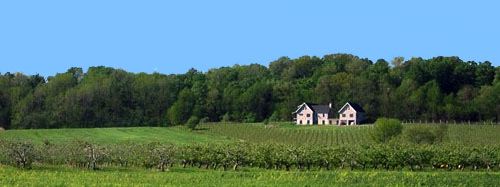
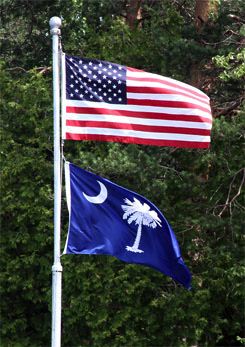 we could hardly pass on another chance to visit the Shumans at their idyllic home on the banks of the St. Lawrence River--about as far north as you can get in New York State before drifting into Canada.
we could hardly pass on another chance to visit the Shumans at their idyllic home on the banks of the St. Lawrence River--about as far north as you can get in New York State before drifting into Canada.